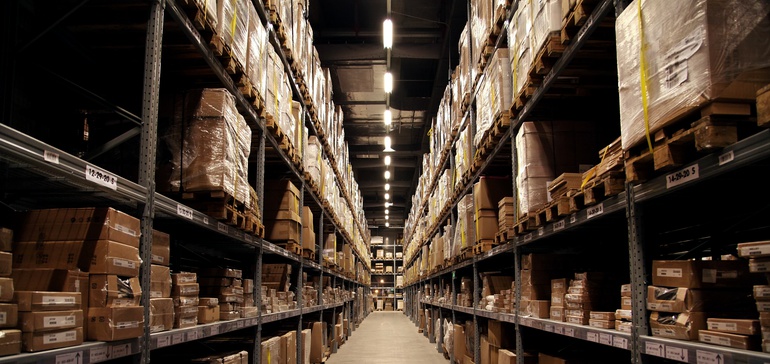Author: Jen A. Miller
In the first flush of the COVID-19 pandemic, warehouses rushed to do what they could to keep their workers safe. Warehouse managers are adjusting workflows to keep employees safe and distanced while also handling the new demand for e-commerce.
“In the beginning of the year, we didn’t know much. We were not well informed. We didn’t know how this pandemic was going to hit us,” said Diego Pantoja-Navajas, VP of cloud warehouse management development at Oracle. Now that warehouse managers have had time to see what’s worked, what hasn’t, and what they could’ve done better, they’ve adjusted workflows in warehouses, making changes that keep workers safe while also handling the new demand for e-commerce, right when the holidays are about to hit.
The companies that invested in digitalization already “have been able to respond to these types of changes and been able to pivot their business model and their operations to make changes faster,” Pantoja-Navajas said.
Warehouse changes are about the People
Peter Bolstorff, executive vice president of corporate development at the Association for Supply Chain Management, said warehouse managers are making investments in finding the right PPE and shifting workplace design to accommodate social distancing.
“How do I incorporate things like temperature monitoring so I can screen folks that are potentially sick? How do I really look at sick leave policies? How do I leverage technology to trace and track movement and contacts, especially when folks report that they’ve tested positive?” he named as some of the questions warehouse managers ask themselves. “At any given time, the hottest spot in the country — one of our warehouses is there.” Ike Sherlock, Vice president of operations at Total Distribution
“This is an industrial safety issue that we’ve been faced with since March,” said Ike Sherlock, vice president of operations at Total Distribution. The logistics, supply chain and transportation company has 46 warehouses in eight states. “At any given time, the hottest spot in the country — one of our warehouses is there.”
Fewer than 10 of the company’s 700 associates have tested positive for the coronavirus, and Sherlock said the infections have been tracked to interactions outside of work. Total Distribution hasn’t had any super-spreader events within the company.
The logistics company had anyone who could work from home do so, required masks on employees coming into the warehouse, and encouraged social distancing (which Sherlock said was easy to do in a warehouse). Total Distribution expanded break rooms, staggered lunches and breaks and start/finish times, reconfigured cubicle layouts and limited visitors into its offices and warehouses. The operator also instituted rigorous cleaning protocols for its forklifts and tractors, protocols that Sherlock believes will continue after the pandemic subsides. “We have the cleanest forklifts and the cleanest tractors you can imagine because we clean them after every break. There’s no reason for it to stop. It’s just habit now,” he said.
Tech’s role in Distancing and Wellbeing
Most warehouse design changes are less about the spaces and more about how workers move through them. “It’s not physical re-laying out of actual racks. It’s, how do I stagger pick and pack? How do I redesign where people take a break?” said Bolstorff. Technology has played an important role, from applications that have employees do check-ins about potential COVID-19 symptoms before every shift, to algorithms that create routes for workers that ensure social distancing and also detect when the distance isn’t maintained.
“How do I stagger pick and pack? How do I redesign where people take a break?” Peter Bolstorff, Executive vice president of corporate development at the Association for Supply Chain Management. An algorithm “can recognize within an aisle if employees are following the six feet rule separation,” Pantoja-Navajas said.
Employees don’t use wearables; instead, artificial intelligence and machine learning use data from cameras that are networked into a central hub/network video recorder. “It also knows how many people should be within that aisle within a specific time based on the number of people in the aisle and if too many tasks are going to that aisle,” he said.
For example, if many customers order a new book, several workers will be directed to the same aisle or aisles. Instead of everyone going to that aisle at the same time, “we’re able to understand how many people we have, what is the distancing between employees, and we’re able to re-route employees to avoid any of those situations,” Pantoja-Navajas said.

Technology can also sense when an employee is not working at their usual capacity, which could be a sign of illness. “We have become more human in saying that we want to make sure how employees are performing, their health, and if we see any anomaly,” Pantoja-Navajas said.
Handling the e-commerce Crush
Changes for worker safety dovetailed with a surge in demand for e-commerce, which has pushed warehouses to adjust at the same time they’re, well, adjusting. Total Distribution’s business was mainly “pallet in and pallet out,” said Sherlock, but during the pandemic, clients asked if the company could handle e-commerce. He said Total Distribution used Synapse, a warehouse management system already in place, to adjust to those needs.
“Having that technology platform that is robust enough to handle basically anything we throw at it, that’s been the secret sauce,” he said. Companies are also ramping up for another surge: the holiday season.
“If you talk to retailers right now, they’re hiring about the same volume of people to work through the holiday season, but they’re probably going to shift” the jobs those workers do. This way, retailers accommodate channels that became popular early on in the pandemic and have stayed, like online ordering and curbside pickup, said Bolstorff. He’s also seen 3PLs and warehouse operators try to accelerate their hiring across the board during COVID-19, a trend he expects to continue.
“They’re trying to pre-skill those coming into their workforce with a basic understanding of inventory management, transportation, logistics and manufacturing,” he said. Organizations are also working to “upskill mid-level leaders to be able to assimilate technology with the workforce.” How has it been for you?






Responses